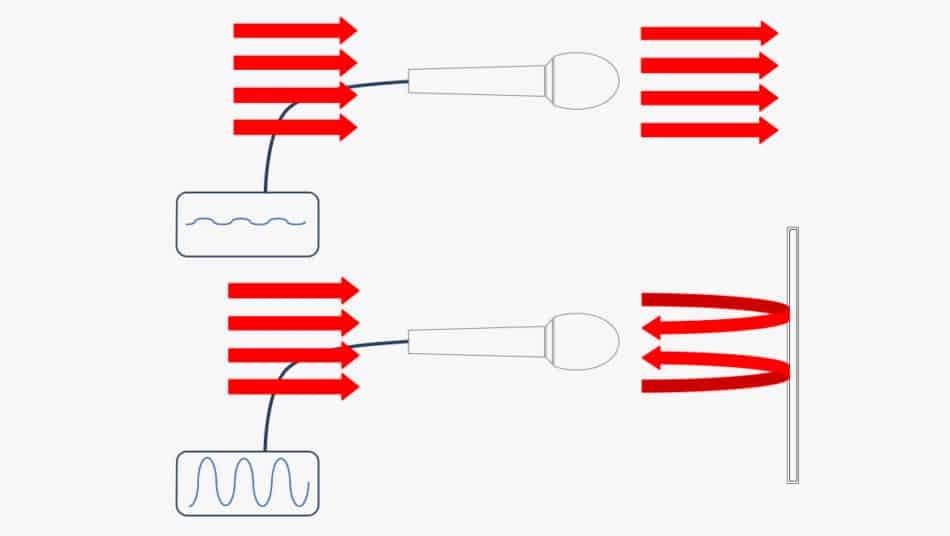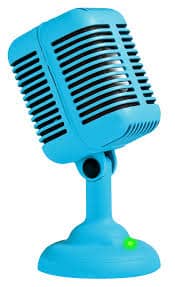Although not used in mainstream Pop music the Cello developed in the 16th century is heard in certain classic sounds like Electric light Orchestra, The Beatles, and today the Evett Brothers for some it’s the most beautiful Stringed instrument in music. How to capture that beautiful sound is another thing. How to Record a Cell?
The Cello’s lowest note is the C2, equivalent to 65Hz. You need to choose a mic that is capable of handling low frequencies as well as the highs by a:
- DPA mic & placement around the F-hole
- X-Y Technique with small Diaphragm Condenser Mics at 6 Ft
- Large Diaphragm Condenser with Omnidirectional pattern
The Cello is extremely colorful and uses wide frequencies that are hard to record, different from simply amplifying the instrument with a Pick-Up
Cello Microphone
Microphone placement is always subjective and is where you can find the sweet spot of the instrument If your Cello is at a budget level then most musicians recommend staying at that level for miking to record. If it’s not, then bring the equipment that will fit what you’re trying to record. When your instrument and playing are at a serious level you should consider a setup matching that quality. Sold and recommended through Amazon the DPA D: vote CORE 4099 Instrument Microphone is incredible for all Close Miking Stringed Instruments.
Cello Pickup
Cello Pickups are a small device that attaches to your instrument in the bridge area. If your looking for amplification to keep up with everyone else on stage then the primary purpose of a cello pickup is to amplify your sound, making it ideal for playing in venues where everyone else is amped and playing loudly.
Often, the distance between the microphone and the sound source is shorter than the normal listening distance of that source. This may change the perception of what the source sounds like. Just like the Acoustic Guitar pick-ups that came out back in the day were very useful for the stage when the acoustic was being applied live to the band’s sound.
It even could be detrimental and muddy everything else up. The electronic pick-ups built-in or added on externally are a lot better now than they use to be.
So Close Miking techniques for a Cello and some other instruments when recording may not be good in all instances because this way of miking will take away from the full sonic image of whatever instrument you are miking.
It still might be good for what you are doing so as a background track where the sound is not the focal point of the track. So weigh it out. The cost of the Pick-ups is inexpensive. If you want a little more than a Ribbon Mic may be the quality that is pro-level but won’t break the bank. The AEA Microphones Nuvo Series Active Ribbon Mic is of ultrasound and professional quality. Take a look at this mic at Amazon and what it can do for recording strings.
In recording studios, engineers often prefer microphones that need little or no equalization. It is all about the sound, the timbre, and the transparency of the instrument. For PA, it is often a question of getting as much sound as possible, leaving them with a wide and stable feedback margin.
Cello pickups are really only necessary if you plan on performing in venues where amplification is necessary. Just think about it: without any sort of amplification, how would your cello be heard over the strum of an electric guitar or the beat of drums? If you don’t plan on performing in front of a live audience for a while, a cello pickup probably isn’t necessary.
Close miking an instrument is often considered to be a compromise to the instrument’s true acoustic sound. An instrument’s sound is usually designed to be experienced at a distance so that all the different elements of the sound are naturally blended into perfect harmony. Yet often, mounting a microphone directly on the instrument is the most practical solution.
DPA Clip-On Microphone and Its Placement
Here you can see that the placement and type of mic are adjusting and Eq ing the sound of the Cello recording and making a huge difference in the way the instrument sounds.
X/Y 2 Microphone Pattern for Cello
If you are looking to record a cello part in stereo, many people will use a pair of small-diaphragm condenser mics placed on a single stand with a bar mount in what’s called an X-Y pattern which we talked about earlier in some other mic placement techniques.
There are variations on this stereo-mic placement pattern but X-Y is the easiest one to deal with, I think. With this technique, the mic stand must be placed somewhat farther away from the cello, about 6 feet at least, or the stereo effect won’t be realized.

The cello’s lowest note is the C2, which is equivalent to 65Hz. To capture the low notes you need to choose a microphone that is capable of handling low frequencies. The overtones and the fine details of the cello also require the microphone to handle high frequencies and have a high level of accuracy as well. Oktava MK-012-01 MSP2 factories matched Stereo Pair with cardioid capsules (silver) is a good pair of Condensers at a really great price that will work well in the X-Y pattern Technique.
When recording a cello remember that a cello reacts as a huge reflective surface. The incoming sound from other sources (instruments, PA system) might reflect off it and enter the microphone from the front even if the microphone is pointing away from the source.
When choosing the microphone for recording a Cello consider an Omnidirectional Mic. Cardioid mics polar patterns are susceptible to the Proximity effect where the lower frequencies that are involved don’t stay neutral. The Omni Directional has an extremely flat response across the frequency range which makes it an ideal type of mic to record a Cello with.
Harmonica Amplifier
1 Mic Cello Technique
When using one mic, most studio engineers will recommend a Large Diaphragm Condenser microphone to capture the best quality. A large Diaphragm Condenser mic has the capacity to capture a wide amount of frequencies. The Cello is much like a human voice where there aren’t two that are made the same or sound the same.
A small-diaphragm condenser may give a focused sound and is a great choice when recording in a room with other instruments. It also is useful when you’re placing multiple microphones on the cello and want to capture various areas of its sound like we talked about using the X-Y pattern technique but when using one with the proper placement it’s critical to use a Large Diaphragm.
Even performing better than using 2 capturing lower bottom end that might escape with smaller condensers. The Best Bang for your Buck is the Rode NT2A Anniversary Vocal Multi-Pattern Dual Condenser Microphone Package The Rodes are great mics and this one will mic the Cello and all its luster and beauty and the Multi-Patterns that you can use for multitasking in your studio.
If you have the luxury of a few microphones then you want to test each one for a mic shootout. this video will give you a starting point on distance and the type of microphone that will sound the best according to the room you’re in. Get a starting point and document each one by ear. You’ll get an idea of what sounds good and what sounds not so good.
The One Mic Technique is all about.
- What Type of Mic
- Distance
- Direction
- influenced by the room and space your recording is in. If the acoustics are tight, try miking the Cello using an Omnidirectional mode. Omni mode will pick up on everything in the room, including the reflections off the walls of your studio. This could be great or this could be awful. It depends on your space and it’s the environment. You could be missing a lot of great reflection in the recording. If there is too much reflection then a Cardioid mic will be needed. It’s all about experimenting for the best sound.

The Cello has incredible color and texture and to be able to record that is an amazing feat. The job of amplifying that sound and recording is a huge difference. For the best miking position on Stage a Pic-Up will do, but a 1 Mic Technique with the best position and placement finding the sweet spot on the Cello is far and away the best way to do it in your Home Studio.
Best Mic Placement For Live and Studio Banjo
JimGalloway Author/Editor


